If you look up the definition of collagen, it is described as “the main structural protein found in skin and other connective tissues, widely used in purified form for cosmetic surgical treatments.” We’re not going to recommend plastic surgery today, though.
We’re just creating the case for our claim that collagen powder is the bee’s knees when it comes to keeping skin supple, youthful, and glowing.

When you think about it, the best foods for our organs are often foods that contain that organ or a component of that organ themselves.
Eating liver is fantastic for the liver, and consumption of collagen is fantastic for the skin – our body’s largest organ. Considering how many toxins and environmental factors our skin is exposed to daily, it’s no surprise that we have to put in the work to take care of it.
While creams, lotions, and scrubs will address the outside layers, we believe that skin health begins on the inside.
What is collagen made of?
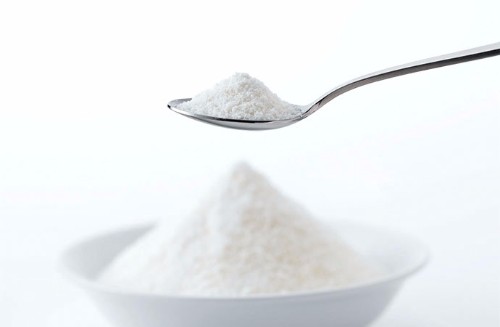
Collagen is the most commonly found protein in our bodies (50%), and it quite literally keeps us from falling apart; it’s found in the connective tissues of our hair, skin, nails, muscles, bones, and tendons.
Collagen is derived from animal bones, skin, and tissues – all those ‘odd and unappealing’ bits you usually throw away.
Gelatine – which you may be more familiar with eating or using – is basically collagen that will gel when mixed with water and heat, thus producing something quite like Jell-O.
Another example is collagen-rich bone broth, made via the process of extruding collagen out of bones and cartilage, which turns the liquid into a gelatinous mass.
Because of its ingredients, collagen is allergen-friendly, so it’s a great supplement for anyone – even those with food sensitivities or intolerance, including those following the autoimmune protocol or someone following the 9-week Happy Body Formula program.
The benefits of collagen

How exactly does collagen work to benefit our skin? It’s undoubtedly one of our favorite “nutrients” to feed the glow with because it keeps those connective tissues strong which in turn reduces wrinkles, sun spots, and dry skin over time.
Let’s talk a little more about the science behind it.
Amino acids
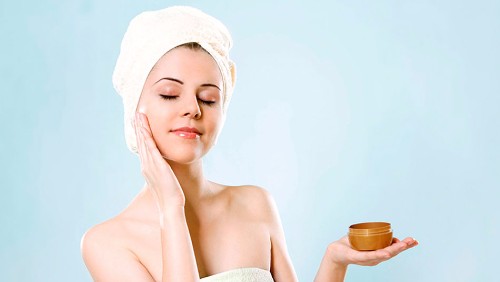
Many of the benefits of collagen are specifically traced back to its content of amino acids: arginine, glutamine, glycine and proline.
Collagen contains amino acids that our bodies already produce. While it may seem silly to supplement with it due to the “if it’s not broken, don’t fix it” mentality, hear us out!
When we are sick or experiencing chronic stress, our bodies need a boost of the stuff. Ever notice that your skin often suffers when you’re under stress or under the weather?
This also holds true for us as we age. After age 25, the body becomes a bit less efficient in producing amino acids. We’re still making ’em, but not in the same abundance as we were. This is why our skin shows as we age!
By supplementing with collagen’s unique amino acid profile, we can ensure we’re getting enough between making them on our own and supplementing with them.
Glycine and proline, in particular, protect collagen. Collagen is one of the most prominent pieces to the puzzle of our skin, so consuming gelatine – which is rich in both aforementioned compounds – can help keep it healthy.
It can also fight the effects of sun damage and improve elasticity. In this study, after four weeks, oral supplementation of collagen showed higher skin elasticity levels in elderly women.
These amino acids are also fantastic at hydrating the skin – one of the most important factors in the way our complexion appears.
This research shows that oral supplementation over the course of eight weeks increased collagen density in the skin, while fragmentation went significantly down – both factors that indicate moisture in the skin.
These amino acids can also help even out skin tone. Veins, arteries, and other factors in discoloration of skin are more likely to appear when collagen levels in the body drop.
While collagen is most abundant in the dermis – the bottom layer of the skin – the specific amino acids present can help work on the upper level where the color is more affected.
Finally, because collagen can act on tissue and repair it, it’s a fantastic healing mechanism. Whether you’re avoiding scars from a current injury, or hope to reduce the appearance of pre-existing scars, a collagen supplement can help rebuild that tissue as much as possible.
Read more about the benefits of collagen and gelatine.
Digestion: the missing link
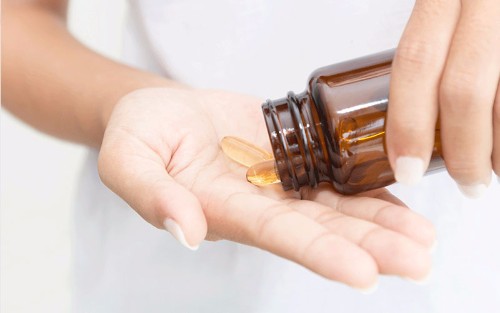
One of the most advantageous things about using an internal supplement alongside or instead of an external solution for skin is that our bodies digest it.
Collagen, in particular, is very easy for the body to digest, meaning that the average person whose digestion is in order will reap the most benefits possible from doing so.
This is the process that allows collagen to access the dermis in the first place – another advantage compared to using cream or lotion, which only reaches the top later of skin.
Collagen has actually been shown to improve digestion, too, so you’ll be seeing benefits beyond your skin!
Our collagen powder recommendation
Since collagen is an animal product, I can’t stress quality of the product enough! It’s so important to choose a product that is ethical, sustainable, and grass-fed.
Grass-fed beef products have an entirely different nutrient profile than conventional beef products, so in this case, quality = effectiveness. I’ve used Great Lakes collagen and gelatine for years because I truly trust the brand. Here’s why:
- They ensure there are no pesticides, insecticides, or any other agricultural residue in their products – a risk with any animal food.
- The product contains no MSG besides the naturally occurring glutamic acid found in protein chains. Read more about MSG here.
- They source their product passionately and responsibly from pastured cattle farmers in Argentina and Brazil. This means the cows are free to roam and graze, and they’re never fed grains or corn. Thus, the yielded product is good for us. You are what you eat, and you are what your food eats!
How to use collagen
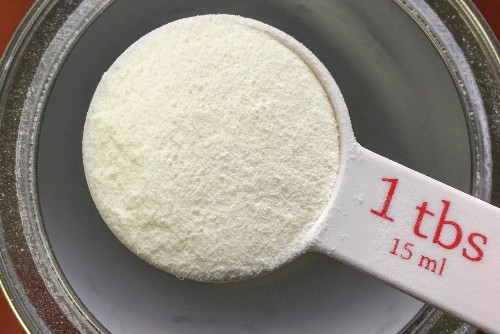
- Mix it with water. Simply add 1 tablespoon of collagen powder to water once or twice a day to see benefits. It doesn’t taste like much, so you won’t notice it. You could even add it to lemon water for added digestive benefits before meals.
- Put it in your coffee. Boost your coffee with 1 tablespoon of collagen! Better yet, make it bulletproof. Add it to coffee with a spoonful of butter and/or MCT oil and flavor as you like with other ‘super food’ powders, natural sweetener, or whatever you like.
- Drink bone broth. The reason bone broth is advertised as such an incredibly healing health food is because of its amino acid profile and collagen content. Make some hearty broth at home to boost your collagen intake. If it gels, you know it’s packed with the stuff! You can always add a scoop of powder to your broth for double the collagen action, too.
Skin loving collagen smoothie recipe
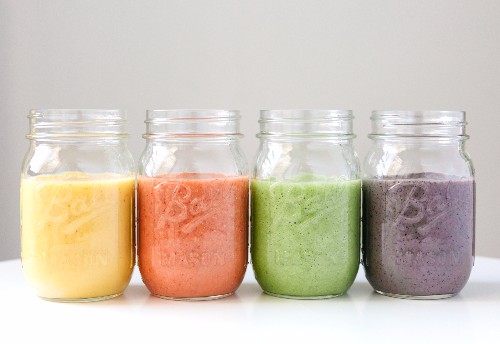
You can add a scoop or two of collagen to any smoothie recipe you’d like for a boost of nourishment for your skin and protein. Collagen is actually one of our favorite real food protein powders, coming in at 6 grams of protein per tablespoon!
It’s a great way to replace whey or hard-to-digest plant proteins like pea protein. This smoothie is paired with other skin-boosting foods and nutrients, making it easy to sip your way to glowing right out of bed in the A.M.
Ingredients:
- 2 tablespoons Great Lakes collagen
- 1/2 avocado
- 1/2 banana
- 1 cup packed leafy greens (try kale or collards)
- 2 brazil nuts (great source of selenium and zinc!)
- Water, coconut water or plant-based milk to blend
Instructions:
- Blend until smooth and pour! Enjoy all of the essential nutrients for healthy skin in this smoothie like vitamin E, mono-unsaturated fatty acids, vitamin A, selenium, and of course… collagen!
We hope you learnt a lot about how to nourish your skin today. Do you use collagen in your beauty routine?
Check out our favorite ways to use gelatine as a topical treatment on the face for DIY mask heaven.
Music, mountains, dogs, travel, food and friends.

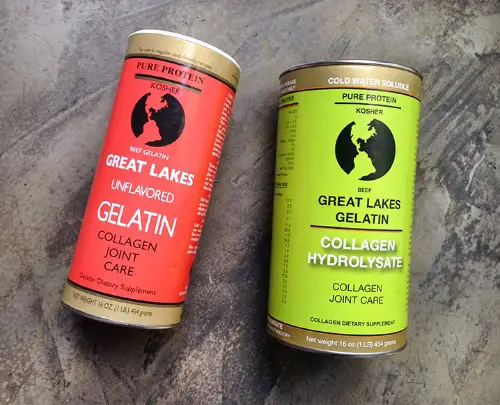

Keeping my skin healthy is a big priority for me. My wife makes fun of me sometimes, but I think it’s important! I didn’t know that I should be moisturizing twice a day, so thanks for the tip.